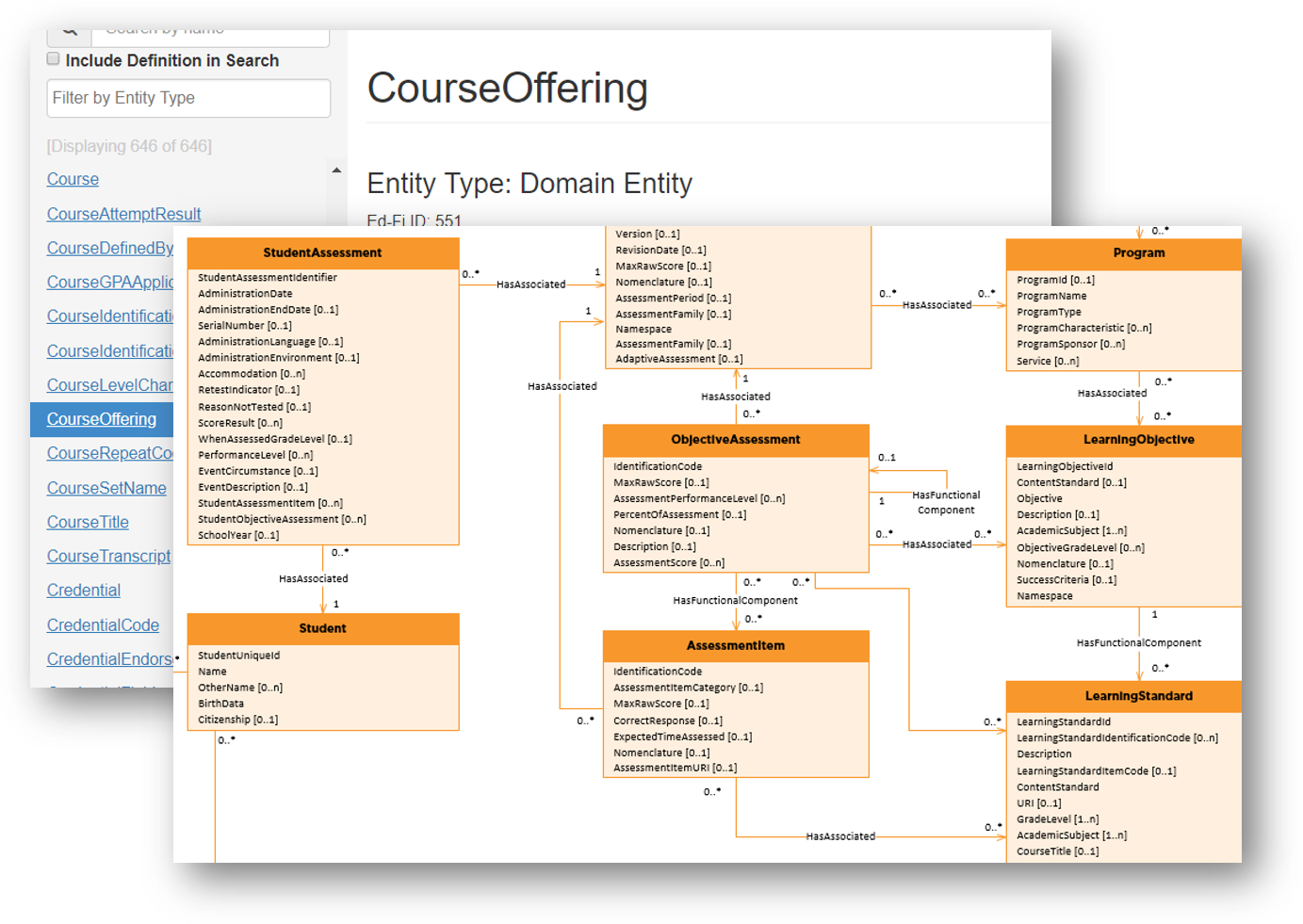This is the documentation for Ed-Fi Data Standard v3.2.0-c. This early access version of the standard powers supported products, including the ODS / API v5.0 and v5.1. This version was superseded by Ed-Fi Data Standard v3.2.
Unifying Data Model - Getting Started
Ed-Fi Data Standards in Action
A primary component of the Ed-Fi technical solution is an educational data model that empowers educators with real-time, actionable information on every student in their classroom, school, or district. The Ed-Fi Unifying Data Model (UDM) integrates and organizes raw education data and information from a broad range of data sources so it can be sifted, analyzed, and put to everyday use.

By using products based upon the Unifying Data Model, educators are equipped with the information they need to understand the individual needs of students and prepare to address those needs on the first day of school. In addition, on-demand access means that action plans for students can be monitored and refined throughout the school year.
Most importantly, technology based on the Unifying Data Model can be implemented in any school, district, regional education service agency, or state education agency today.
Introduction to the Ed-Fi Unifying Data Model
The model is expressed in Unified Modeling Language (UML), and includes entities such as students, teachers, assessment results, attendance, and many others. The role of the Ed-Fi UDM is to harmonize the information model and data types across all Ed-Fi standards and implementation technologies. This means that Ed-Fi standards and technologies share common models and data definitions.
The Unifying Data Model is built on open industry protocols and conventions and is therefore vendor-neutral. The Unifying Data Model and its derivative products can be implemented on any hardware and software platform.
